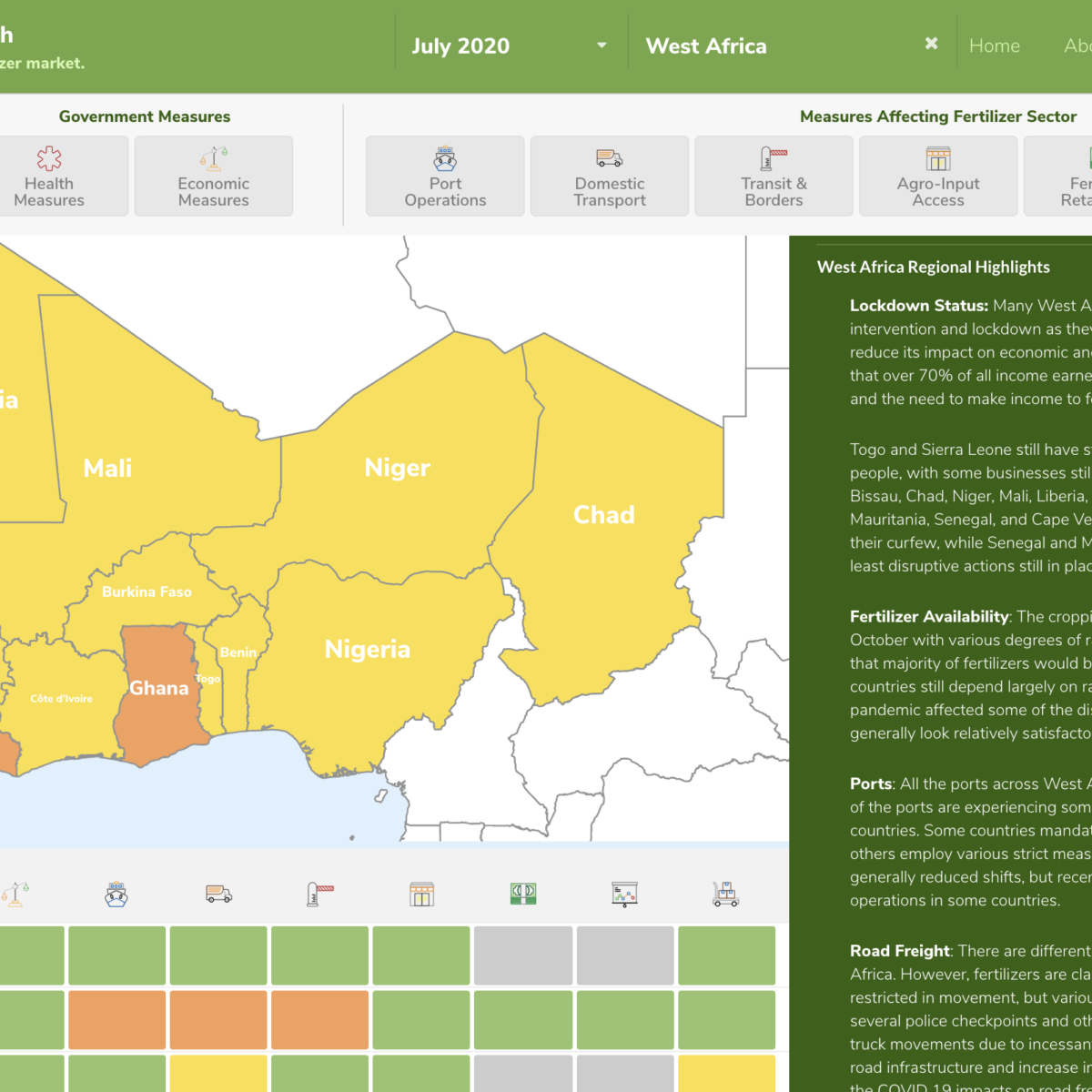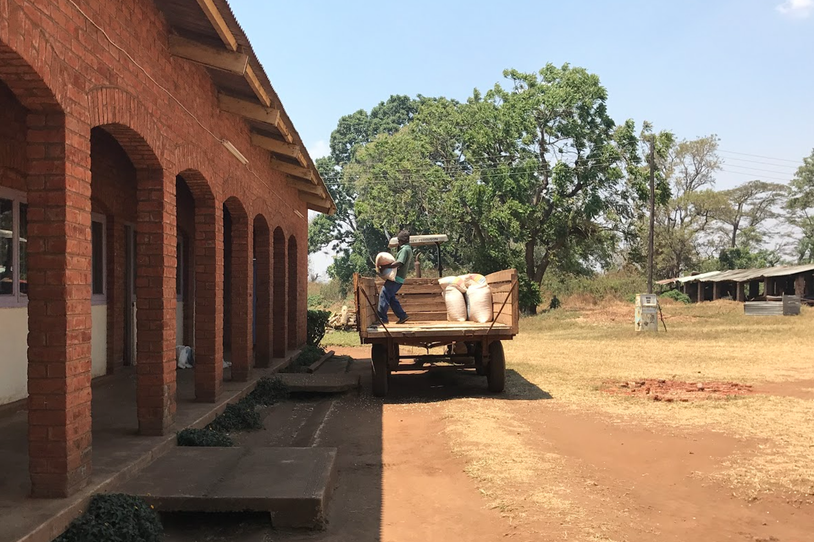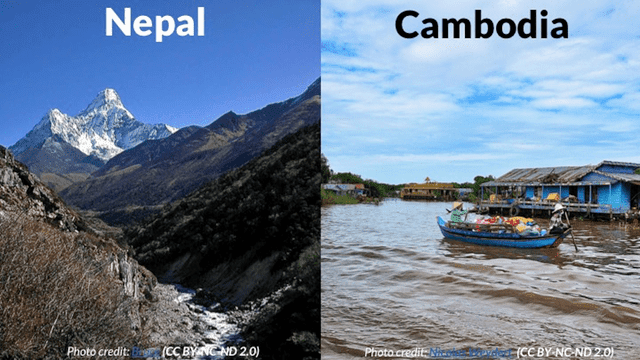Posts focused on Agriculture
Page 7

Understanding Fertilizer Data
Finding reliable agriculture data in sub-Saharan Africa is often difficult. If available at all, data is usually fragmented and tucked away in silos within government ministries or closely held by private companies. It is also significantly delayed or in a format that makes analysis difficult. For stakeholders who need information for decision making, a lack of reliable data is a significant barrier. The Visualizing Insights on Fertilizer for African Agriculture (VIFAA) program is working towards making fertilizer-related data, a key subset of agriculture data, more accessible to stakeholders for decision making.

Measuring COVID-19’s Impact on the Fertilizer Sector in Sub-Saharan Africa
The COVID-19 Africa Fertilizer Watch Dashboard, covering 28 countries across sub-Saharan Africa was launched today. This dashboard uses 11 indicators to track COVID-19 country-specific mitigation measures on the delivery & use of fertilizers to identify impacts on productivity & food security across the continent. The goal of this dashboard is to support efficient and effective responses to the evolving global health emergency, and ensure that sufficient and appropriate fertilizers reach farmers.

Launch of The African Seed Access Index (TASAI) Visualizing Information on Seeds using Technology in Africa (VISTA)
The timely availability of high-quality, affordable seeds is critical to improving food security, resilience, and livelihoods for smallholder farmers in Africa. In partnership with TASAI, Inc., DG is proud to announce the launch of the TASAI VISTA program.

Keeping CALM to Design a National M&E System for Malawi
The Government of Malawi’s National Agriculture Investment Plan and existing M&E framework outlines priority areas for measuring results – however, currently there is no system for measuring progress against these goals. Without the ability to measure progress, how can we evaluate policy effectiveness? In Malawi, the government has recognized that an M&E management information system

Announcing the Visualizing Insights on Fertilizer for African Agriculture (VIFAA) Program
Sub-Saharan Africa’s population has grown by 11 million people a year for the past 60 years – for a total of about 670 million people since 1950. Mortality rates have declined, fertility rates have risen – but what does a shifting demographic dividend mean for keeping up with food security? Though fertilizer consumption in Sub-Saharan Africa makes

Can a Centralized Digital Repository Support Country-level Data Use and Sharing?
In late September, in preparation for the release of USAID’s new Development Data Library (DDL), Development Gateway (DG) and the USAID Data Services Team visited USAID staff and implementing partners in Nepal and Cambodia. During their visit, the Data Services Team and DG hosted a workshop to introduce partners to the new DDL platform through

Mapping the Path Toward Collaborative Research
Development actors, ourselves included, talk a lot about the importance of opening up datasets and building interoperability in order to leverage the power of collective data – but often without clarity on what meaningful collaboration and sharing actually requires in practice. For example, what can a livestock project in Nepal and a rice project in Cambodia learn from each

Can Nepal and Cambodia Really Have Common Agricultural Data Standards?
What does data-driven agricultural development in Nepal and Cambodia have in common? To answer this question, Development Gateway and partner Athena Infonomics are implementing the Accelerating Data-Driven Agriculture Development in Cambodia and Nepal Activity – funded by USAID and led by FHI360 through the mSTAR program – to support Feed the Future stakeholders in both countries improve their data interoperability and sharing practices.

Talking Agriculture Data Interoperability at ICTforAg 2018
Recently, we shared a post on how we’re driving progress towards inclusive agriculture data use by strengthening agriculture data interoperability through FHI360’s Mobile Solutions Technical Assistance and Research (mSTAR) project. If you’re interested in finding out more, join us on June 14th at the 2018 ICTforAg conference in Washington, D.C. We’re looking forward to connecting

What does Data Interoperability Require in Practice?
A few months ago, under the mSTAR project funded by USAID, DG and our partner Athena Infonomics (AI) set out to understand the underlying structure of the data currently being collected and managed by Feed the Future implementers, and how to best support them to open up and share their data through digital tools and best practices.